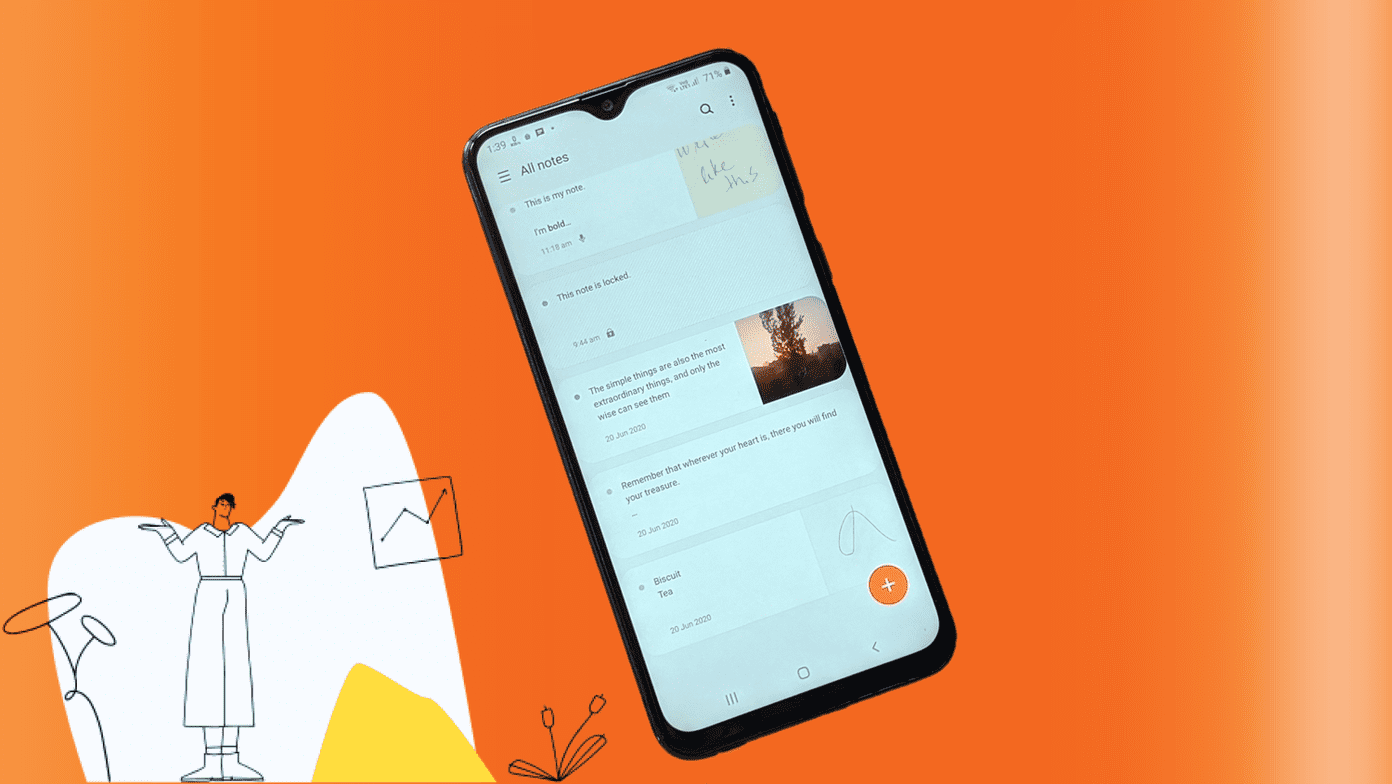In late 2019, Realme announced Color OS based Realme UI to take on rivals such as Xiaomi’s Redmi and POCO. With the Realme UI, the company aims to bridge the gap between stock Android and its custom UI with a rounded icon and the white theme. Thankfully, Realme isn’t limiting the rollout of Realme UI to the new devices only. The company has updated the majority of the past portfolio to the Android 10-based Realme UI. In this post, we will talk about the top eleven (11) Realme UI tips and tricks to use it like a pro. The Realme UI is based on Color OS 7.0, so there are similarities in terms of functions between the two. But Realme has done a good job of adding its touches. Let’s get started.
1. Full Screen Gestures
With the introduction of Android 10, Realme has adopted Google’s default full screen gestures to its UI. They work as expected. Swipe up from the bottom to go home, swipe up and hold to reveal multitasking menu, and swipe from the either of sides to go back in an app. They are hidden under the Settings menu. Open Settings > Convenience tools > Navigation Buttons and select swipe gestures. While Realme has done a good job with gestures, they are still no match to the iOS implementation.
2. Dark Theme
Here, you will see the benefit of using an OEM UI compared to the stock Android one. Google’s dark theme gets implemented within the apps that support Android 10 dark theme APIs. Whereas Realme’s dark mode forces third-party apps to implement the dark theme. Open the device Settings, navigate to Display and switch on dark theme. It will force the dark theme everywhere.
3. Live Wallpapers
This is not new in the Android world. Samsung and LG used to offer live wallpapers in the past, but they were too extreme and used to drain the device battery. Realme’s approach is better here. The added wallpapers are live but minimal and look quite good. Since the Realme UI update on my Realme X, I have been using them on my device and so far, I haven’t noticed any major drain on the battery.
4. Tons of Customization Options
Following footsteps of Color OS, the Realme UI comes with a plethora of customization options. For instance, you can change home screen mode, the layout of apps, add different effects, swipe down gestures, and more. Realme has added Smart Assistant function in the side drawer. It’s mostly advertisements from the Realme store apps and games. There are two useful additions though. Quick functions and Favorite contacts. Quick functions let you access the useful tools like scanner, translator, Google search, or any app from just a swipe.
5. Icon Autofill
This one is useful for iOS wannabes. With a single tap, one can arrange the randomly placed app icons in proper order. Long tap on the home screen and dive into settings. Switch on the Icon Autofill option to rearrange the icons.
6. App Clone
Open device Settings and scroll down to the App Cloner option. Here, you will see the list of apps that you can clone in the device. I would like to see something like Samsung’s Secure Folder in the future Realme updates.
7. Theme Store
Theme Store is the heart of the Realme UI experience. With a single tap, you can implement new wallpapers, color accents, fonts, and more. Some may find it flashy, but in markets like India and China, Theme store is extremely popular. Head to device Settings and open Theme store. Browse themes, select your favorite one, and watch the preview. Tap on the download button to apply the change.
8. Realme Sidebar
Realme has added the sidebar shortcut to access the most used apps, games, and tools from the side menu. It’s similar to the Samsung Edge sidebar. Open Realme Setting and go to Convenience tools > Smart Sidebar menu and enable the option. You can change the transparency of the menu and even change its position. Swipe left and open the menu. You can tap on the edit button to change the tools of the sidebar menu. I use it for taking screenshots and screen recordings.
9. Smart Driving
This one is useful for those who frequently drive around the routine for work. When enabled, Smart Driving toggles on Do Not Disturb mode and make necessary changes for a convenient driving experience. From Smart Driving Settings, you can block calls from anyone, auto-send a message after a rejecting call, block in-app voice and video calls, and even block banner notifications. You can enable the Smart Driving mode from the notification toggles or the Settings > Smart Services > Smart Driving menu.
10. Lock screen Magazine
This one is a hit and miss for me. You can enable Lock screen magazine to view stunning images on the lock screen. Go to Settings > Home screen > and scroll down to Lock Screen Magazine. I have turned it off, but if you are a fan of it, then switch on the toggle.
11. Assistive Ball
I use it all the time. It enables the floating ball on the screen to navigate through the UI. Open Settings > Convenience Tools > Assistive Ball and toggle on the option. There are two options. You can either use gesture operations or tap menu. Tap menu opens up the useful shortcuts to lock screen, back, screenshot, and home. Gesture operation lets you access to the home, notification menu, etc. via tap, double-tap, and touch and hold.
Use Realme UI Like a Pro
Realme did a commendable job with the first interaction of its UI over the Android. Going forward, I’m hoping to see more Oxygen OS like approach with closer to stock Android look and feel. With that being said, I can’t wait to see how Realme takes it further with the future updates. Next up: Samsung also did a solid job with the brand new One UI Android launcher. Read the post to find the tips and tricks of it. The above article may contain affiliate links which help support Guiding Tech. However, it does not affect our editorial integrity. The content remains unbiased and authentic.






























